Four trends influencing kitchen design in 2021
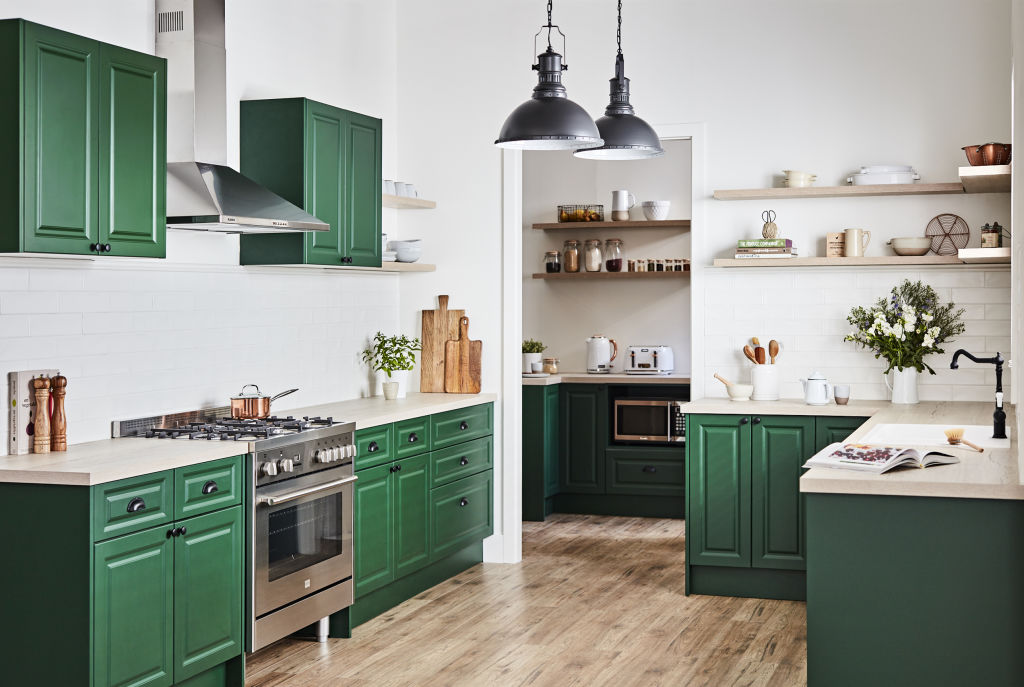
The world is in the midst of a multi-generational defining event, the impacts of which are already influencing kitchen design.
Underpinning the latest trends is the desire to be nurtured, supported, and uplifted – a sentiment experts say will shape our homes for decades to come.
Forest green cabinetry
Just as COVID-19 was taking hold of the Western world in March 2020, Architectural Digest released a video of actress Dakota Johnson’s home, inspiring a cult-like following of her dark green kitchen cabinetry.
A video tour of supermodel Kendall Jenner’s home featuring similar shade followed in July, cementing dark green kitchens as the interiors colour of the moment.
Bunnings trend and design manager Jane Wright says the appeal of this deep, forest green shade ties into the current desire for nature-inspired palettes.
“During times of uncertainty, people tend to look for comfort,” she says.
This versatile colour can be elevated with white marble (as seen in Jenner and Johnson’s homes), or styled with textured timber for a more grounded, rustic feel.
Cottagecore
Last year also saw the rise of cottagecore; a movement that idealises a slower-paced, self-sufficient, country lifestyle featuring flowers, linen tablecloths, handmade tableware, and lived-in timber furniture.
“It’s in part a reaction against capitalism and our increasing time spent in front of a screen and on social media, but also related to ongoing interest in wellness and sustainability, and more broadly, the idea of social consciousness,” Wright says.
Wright says the trend has been emerging since 2017, but only reached mainstream appeal over lockdown.
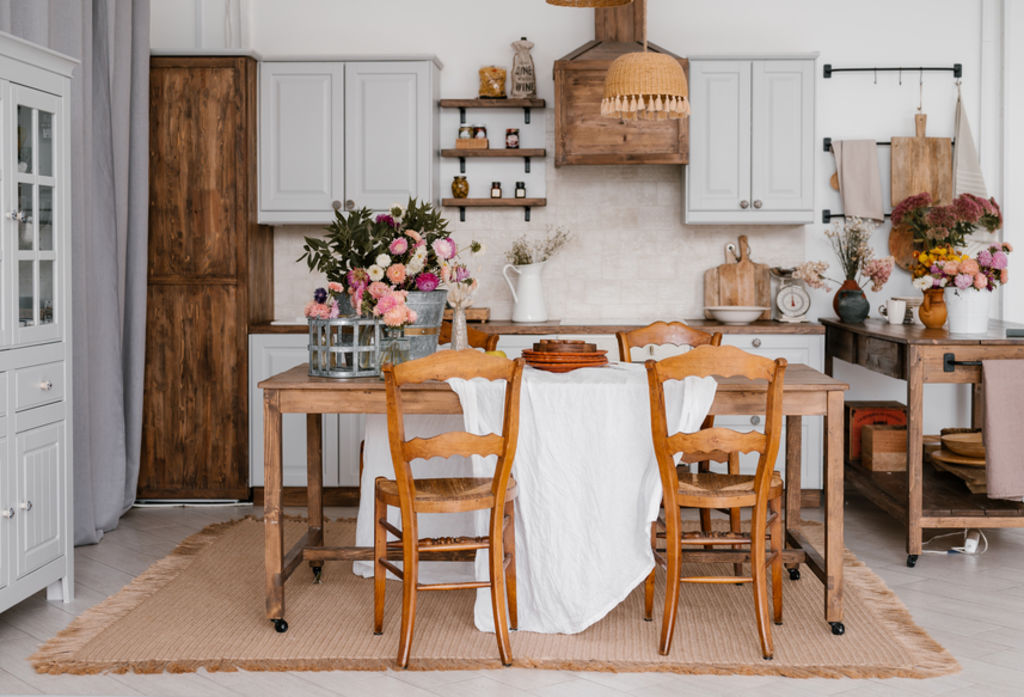
“Lockdown gave us more time on our hands, and people made a shift back to the old days pastimes such as crafting, baking and gardening,” she says.
Bernadette Janson, chief renovation mentor at The School of Renovating also observed the growing appeal of this aesthetic over the past 12 months.
“Covid has changed our values,” she says. “We want the kitchen to be clean, but we now bake, grow vegetables, brew kombucha, and sprout beans. These new obsessions are giving rise to a need for a more wholesome, lived-in kitchen.”
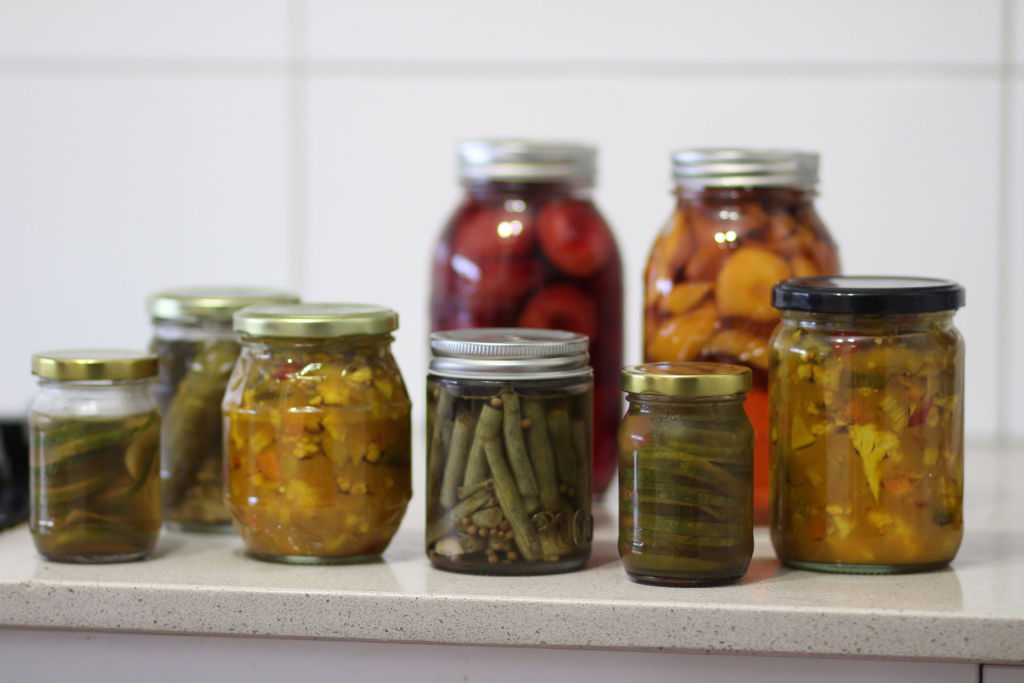
Maximalism
Maximalist interiors have been popular for years in living spaces, and kitchens are now following suit.
One trend underpinning this wider aesthetic is open shelving (instead of enclosed upper cabinetry), which encourages interesting, mismatched pieces to be proudly displayed.
This look also lends itself to styling with antique tiles, textured floors, and bold colour, all of which are currently popular.
“Open shelving also adds a bit of style to a space – remaining practical, while really opening up the kitchen,” says Simone Mathews, founder of SOUL Home.
Maximalism is very much designed around the theory of “more is more”, which encourages purpose, and forces the eye to take in the entire room at once.
“I love the use of different textures and materials, like timber shelving with stone benches,” says Mathews. “Using plants and greenery is a wonderful way to bring this style together and to connect it to the outdoors.”
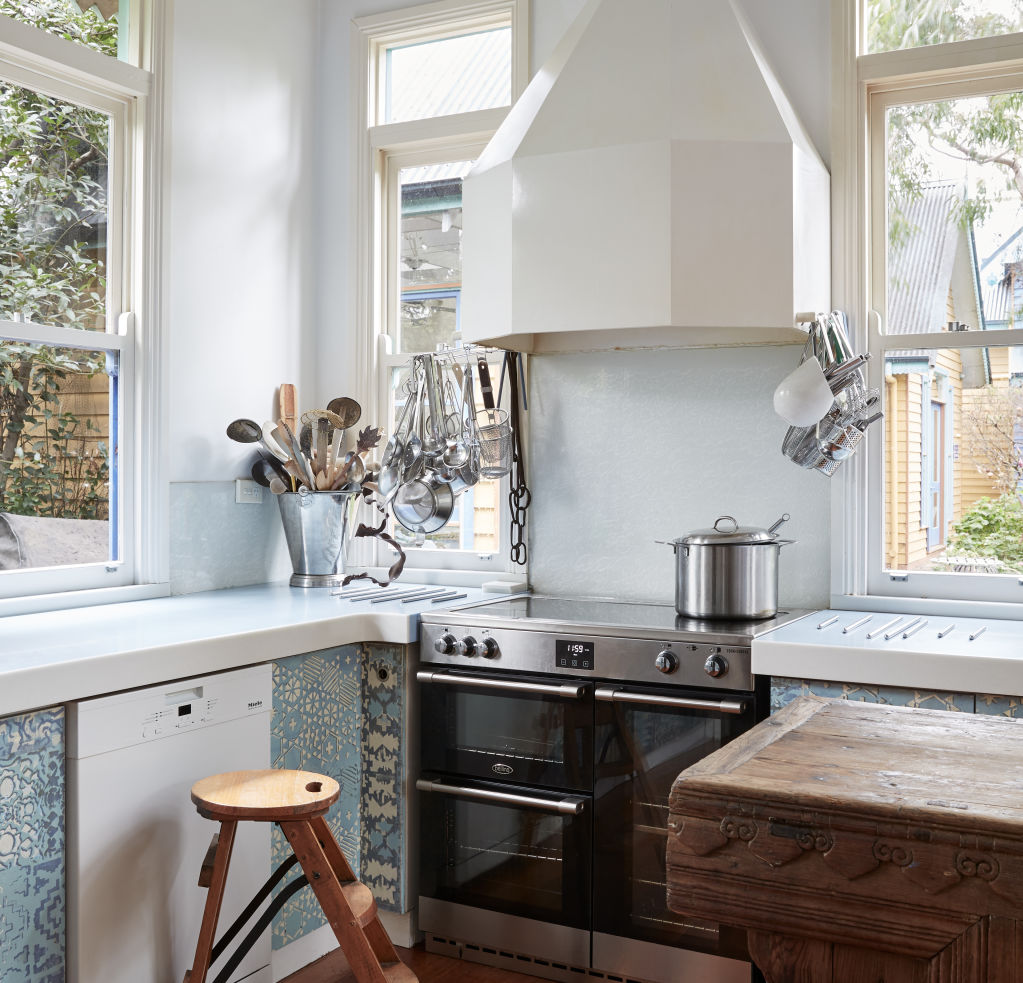
Curves
Those who watched The Block in 2020 will be aware of the curvaceous lines making their way into kitchen design.
Designers say this trend is an effective way of injecting interest and space into a kitchen.
“I like the addition of a curve to a kitchen design, particularly in the island bench. It adds a softness to the design and an ease in circulation,” says Janson. “A curved bench can make a room feel bigger by eliminating a sharp corner.”
Curves can be incorporated across the entirety of a bench top, as a standalone island feature, in an entrance archway, or feature as a detail within a timber surface. “It allows the use of pattern in a really soft way,” Mathews says.
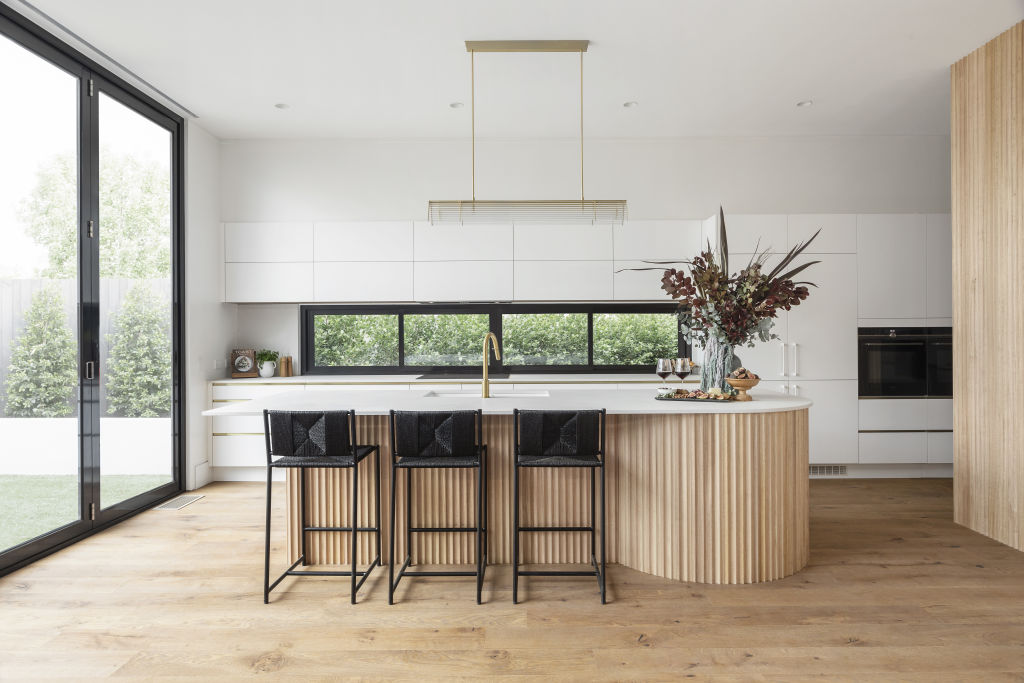
For consumers seeking a simple way to modernise their kitchen, Wright recommends adding a curve if this ties into your home’s wider interior scheme.
“If you’re replacing your kitchen island bench for example, it’s not a huge job to replace your island with a curved end with marble or porcelain,” she says.
Wright says renovators can achieve these looks and more with the help of a Bunnings kitchen expert consultant – an affordable design service helping renovators create their dream kitchen. Book an appointment and receive a realistic 3D rendered image of your new kitchen suitable for your style and budget.
We recommend
We thought you might like
States
Capital Cities
Capital Cities - Rentals
Popular Areas
Allhomes
More







